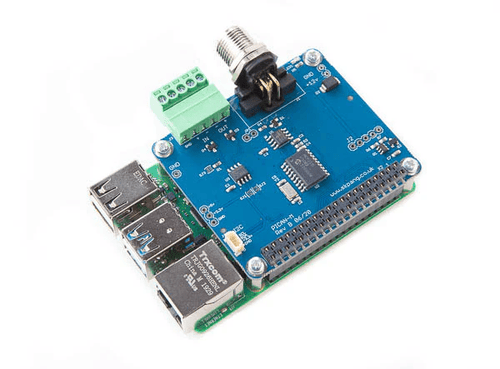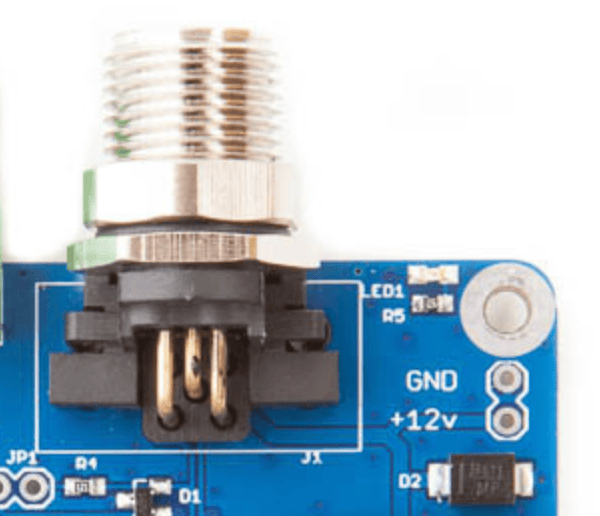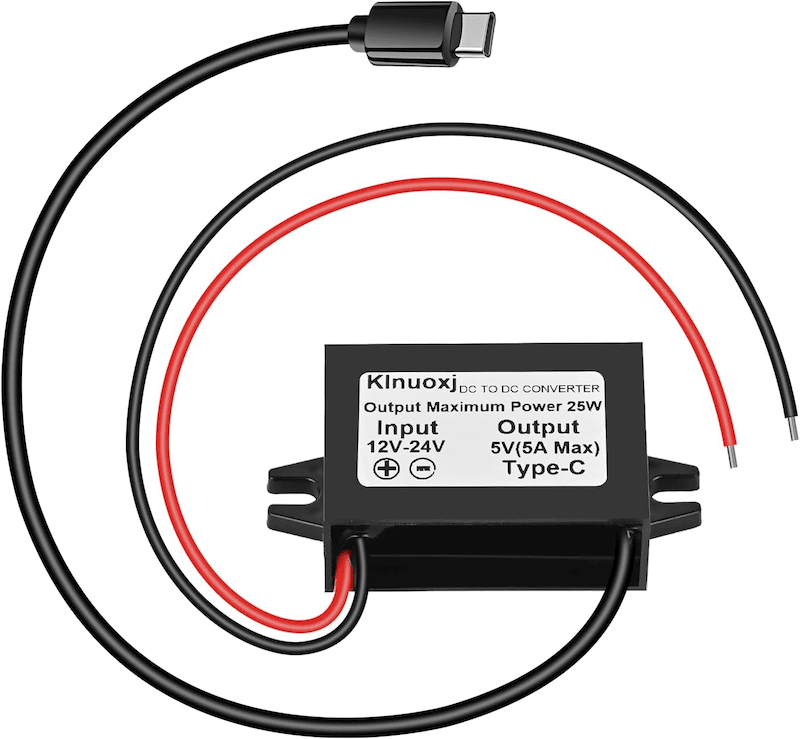Blog
Recent Posts
Why the PiCAN-M with SMPS Cannot Power Raspberry Pi 5 — and the Simple Workaround
Posted by on
 The PiCAN-M HAT from Copperhill Technologies is a specialized interface developed exclusively for marine applications and specifically targets NMEA 2000 networks. NMEA 2000 is the standard backbone for modern marine electronics, used to interconnect engines, chart plotters, sensors, and onboard monitoring systems. In its standard version without SMPS, the PiCAN-M HAT is powered directly from the Raspberry Pi and is intended for installations where the Raspberry Pi already receives stable power from the vessel’s electrical system. This configuration emphasizes reliable NMEA 2000 communication and electrical robustness, making it well suited for marine development, diagnostics, and fixed installations with controlled power distribution.
The PiCAN-M HAT from Copperhill Technologies is a specialized interface developed exclusively for marine applications and specifically targets NMEA 2000 networks. NMEA 2000 is the standard backbone for modern marine electronics, used to interconnect engines, chart plotters, sensors, and onboard monitoring systems. In its standard version without SMPS, the PiCAN-M HAT is powered directly from the Raspberry Pi and is intended for installations where the Raspberry Pi already receives stable power from the vessel’s electrical system. This configuration emphasizes reliable NMEA 2000 communication and electrical robustness, making it well suited for marine development, diagnostics, and fixed installations with controlled power distribution.
The PiCAN-M HAT variant with integrated SMPS is designed for marine environments where a higher-voltage onboard supply, typically 12 V or 24 V, is readily available. The onboard switched-mode power supply converts this voltage to a regulated 5 V rail for the Raspberry Pi, reducing wiring complexity and eliminating the need for an external DC-DC converter. This approach is particularly useful in compact marine enclosures and retrofit projects. As marine electronics and Raspberry Pi models evolve, overall system power requirements should be evaluated carefully to ensure stable operation, especially when higher-performance Raspberry Pi boards are used alongside NMEA 2000 networks.
However, a limitation arises when using the SMPS version of the PiCAN-M HAT with a Raspberry Pi 5. The onboard SMPS (switched-mode power supply) is rated for a maximum output current of 3 A, whereas the Raspberry Pi 5 is designed to draw up to 5 A under load. As a result, powering a Raspberry Pi 5 directly from the PiCAN-M SMPS can lead to undervoltage conditions and unstable operation. To address this, we have developed a reliable workaround that uses an external DC/DC converter to meet the higher current demands while still retaining full NMEA 2000 functionality.
For more information, see also our post Testing PICAN CAN Bus HATs with the Raspberry Pi 5...
Please note that the workaround described below is a conceptual solution at this stage. It is being shared in response to customer requests and has not yet undergone full validation or extended testing. Additional verification and refinements will follow. Until then, implementing this approach is done at your own risk.
The PiCAN-M board—whether equipped with SMPS or not—includes a dedicated power section that allows you to access or supply 12 VDC, as illustrated here:

This connection point can be used to feed the 12–24 VDC input of an external DC/DC converter, as shown in the following image.
The selected converter provides a regulated 5 V output via a USB-C connector, which plugs directly into the Raspberry Pi 5 and supplies the required current independently of the PiCAN-M’s onboard power circuitry.
This approach allows the PiCAN-M to remain focused on NMEA 2000 communication while the Raspberry Pi 5 is powered by a converter sized appropriately for its higher current demands. For ordering information and detailed technical specifications of the recommended DC/DC converter, please refer to DC 12V/24V to 5V USB C Step Down Converter.
MicroPython on ESP32: Beginner's Guide to Programming, Setup, and IoT Project Basics
MicroPython is a lean re-implementation of Python 3 designed for microcontrollers. It provides an interactive REPL(Read-Evaluate-Print Loop) and supports a large subset of the Python standard library, making embedded programming more accessible to those familiar with Python. In simple terms, MicroPython lets you write Python code to control hardware like the ESP32 without the need [...]
Local Interconnect Network (LIN) in Automotive: A Beginner’s Guide
The Local Interconnect Network (LIN) is a low-cost, low-speed serial bus system used in modern vehicles to communicate between electronic components. It was introduced as a complement to the faster Controller Area Network (CAN) bus, targeting applications where high performance isn’t needed and cost is critical. LIN operates over a single wire (plus ground) at [...]
Why CAN and LIN Need to Communicate in Modern Vehicles
At first glance, it may seem odd that a vehicle would use two different network technologies—CAN (Controller Area Network) and LIN (Local Interconnect Network)—and even stranger that they need to communicate with each other. After all, why not use one network everywhere and avoid the complexity? The truth is that both CAN and LIN exist because [...]
CAN Bus Programming in Python for Automotive, Industrial Automation, and Robotics
The Controller Area Network (CAN bus) is a resilient, lightweight, and efficient communication protocol originally developed by Bosch in the 1980s for in-vehicle networks. It allows multiple microcontrollers (ECUs) and devices to communicate without a central host, using a multi-master, message-oriented design. Over the decades, CAN bus has expanded beyond its automotive roots into domains [...]
Mastering CAN Bus: Essential Guide to Understanding and Troubleshooting Vehicle Networks
In today’s world of connected vehicles and industrial automation, understanding the details of networked communication protocols has become a pivotal skill for engineers and technicians alike. The book Mastering CAN Scratch: Understanding & Troubleshooting (ISBN/ASIN B0G24Z25RZ) steps into this space by offering a comprehensive, hands-on guide to the widely used Controller Area Network (CAN) bus [...]
Mastering CAN Bus: A Deep Dive into Automotive CAN Bus and In-Vehicle Networks
In an age when vehicles are less about purely mechanical linkages and increasingly about interconnected electronics and networks, the book Automotive CAN Bus and In-Vehicle Networks arrives at exactly the right moment. Graham Stoakes presents what he calls “the digital nervous system of modern vehicles” — and for technicians, students, and enthusiasts alike, this translates [...]
BLCKTEC 460T OBD2 Scanner Review: A Powerful All-System Diagnostic Tool for Serious DIYers
If you maintain your own vehicle or manage a small repair operation, having a capable diagnostic tool is essential. The BLCKTEC 460T OBD2 Scanner is one of the more advanced consumer-level devices on the market, offering all-system diagnostics, service reset functions, and live-data graphing. Below, we’ll explore what this tool can do, how it performs, [...]
Programming the ESP32: Choosing the Right IDE for Your Workflow
The ESP32 has become one of the most versatile and affordable microcontrollers available today. Whether you’re building IoT devices, automation systems, or experimenting with wireless communication, the ESP32 provides exceptional power and flexibility—dual-core processing, Wi-Fi and Bluetooth connectivity, low-power modes, and robust GPIO capabilities. But before any code can run on an ESP32, developers must decide [...]
Comparing SAE J1939 Baud Rates: Evaluating 250k vs. 500k for Modern Vehicle Networks
For years, SAE J1939 has been synonymous with heavy-duty vehicle networking, and 250k baud has been the de facto standard. But as vehicles grow more connected and data-intensive—think emissions controls, advanced diagnostics, telematics, and electrification—the question arises: is 250k still enough? The recent discussion around adding a 500k baud rate to the J1939 standard aims to [...]
 Loading... Please wait...
Loading... Please wait...

